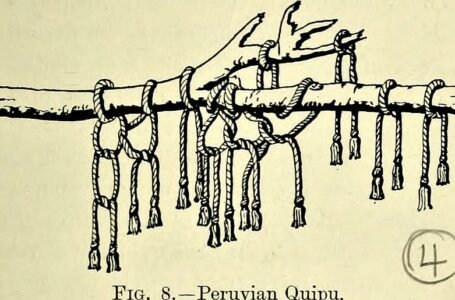Diving into the Past: Investigating the Yonaguni ruins, of Japan

Yonaguni Island is located off the South Western coast of Japan and is known for the underwater ruins that were discovered there in the 1980s. These ruins include traced structures, large stone blocks and carvings that resemble animals and human figures. The ruins are believed to be at least 8000 years old and are thought to have been created by an ancient civilization that existed in the area. Some experts urge data ruins are the remains of an ancient city that were submerged by a seismic event, while others believe that they are natural formations created by erosion. Some researchers have suggested that the ruins are evidence of an ancient civilization that existed in the area possibly predating the Jomon period of Japan.

The debate over the true nature of yonaguni ruins continues to this day, with some experts urging that the structures are man-made while others believe that they are natural formations. The lack of definitive evidence has made it difficult to determine the true nature of the ruins. The yonaguni monument is now a popular tourist destination and a UNESCO World Heritage site. There are divine tools available to explore the monuments, and also a small museum on the island where visitors can learn more about the history and controversy surrounding the ruins.
- Archaeological significance: The underwater ruins discovered on Yonaguni Island is believed to be at least 8,000 years old and are thought to have been created by an ancient civilization that existed in the area. The ruins include terraced structures, large stone blocks, and carvings that resemble animals and human figures. The debate over the true nature of the Yonaguni ruins continues to this day, with some experts arguing that the structures are man-made while others believe they are natural formations.
- Touristic significance: The Yonaguni Monument is now a popular tourist destination, and diving tours are available to explore the monuments. There is also a small museum on the island where visitors can learn more about the history and controversy surrounding the ruins.
- Scientific significance: The ruins at Yonaguni are of great scientific interest, as they provide a glimpse into an ancient civilization that existed in the area. The ruins also hold important information about the geology and tectonics of the region and the underwater environment that existed in the past.
- Cultural significance: The ruins on Yonaguni are considered to be of cultural significance, as they provide insight into the lives of the ancient people who lived in the area and the beliefs and practices of that civilization.
- UNESCO World Heritage Site: The ruins on Yonaguni Island have been designated as a UNESCO World Heritage Site. This distinction acknowledges the site’s importance to humanity and recognizes its cultural, scientific, and tourist significance.

It is difficult to say exactly what life was like in ancient Yonaguni, as there is little concrete evidence about the culture and society of the people who lived there. However, based on the ruins that have been discovered and the artifacts that have been found, it is believed that the ancient people of Yonaguni were skilled builders and engineers.
They used advanced techniques to cut and shape the large stone blocks that make up the underwater ruins. It is also believed that the ancient people of Yonaguni were a maritime culture, as the island is located off the coast of Japan and the ruins include structures that may have been used for fishing or seafaring. Additionally, some of the carvings found on the ruins depict fish and sea creatures, further supporting the idea that the ancient people of Yonaguni were connected to the sea. It is also believed that the ancient civilization in Yonaguni had a religious or spiritual significance, as some of the carvings depict human and animal figures, which could have been used in religious ceremonies or rituals.

Unfortunately, there is not enough evidence to know more about the social structure, economy, and politics of the ancient civilization in Yonaguni. And many of the theories that have been proposed about the nature and purpose of the ruins are still under debate among experts.
The exact cause of the demise of the ancient civilization on Yonaguni Island is not known. There are several theories as to what led to the destruction of the city, but none of them has been proven conclusively. One theory is that the city was destroyed by a seismic event, such as an earthquake or a tsunami. This theory is supported by the fact that the ruins are located underwater and that the structures appear to have been submerged suddenly. Another theory is that the city was gradually abandoned over time as the sea level rose, eventually submerging the city. This theory is supported by the fact that some of the ruins appear to be terraced and may have been used for agriculture.

A third theory is that the city was destroyed by warfare or invasion. However, no evidence of warfare or invasion has been found at the site. Another theory is that the city was not a human-built city but a formation of nature. The proponents of this theory argue that the architectural-like features on the site were formed by natural processes, such as erosion or tectonic activity. It’s important to note that all these theories are still under debate and more research is needed to determine the true cause of the demise of the ancient civilization on Yonaguni Island.

The underwater ruins on Yonaguni Island were first discovered in the 1980s by a local diver named Kihachiro Aratake. Aratake was exploring the waters around the island when he noticed a large, terraced structure on the seafloor. He later returned to the site with a team of divers and began to investigate the ruins in more detail. The ruins were initially thought to be natural formations, but further investigation revealed that they were actually man-made structures. The large stone blocks that make up the ruins appeared to have been cut and shaped using advanced techniques, and the terraced structures seemed to be the remains of an ancient city.
Aratake’s discovery caused a stir in the archaeological community, and soon experts from around the world were coming to Yonaguni to investigate the ruins. In 2019 the site become the part of UNESCO world heritage site. The discovery of the Yonaguni ruins has sparked a lot of interest and debate among experts. While some believe that the ruins are the remains of an ancient city, others argue that they are natural formations created by erosion. Despite this debate, the ruins are considered to be of great scientific and cultural significance, and they continue to be studied and explored to this day.
In conclusion, Yonaguni Island is a small island located off the southwestern coast of Japan that is known for the underwater ruins that were discovered there in the 1980s. These ruins include terraced structures, large stone blocks, and carvings that resemble animals and human figures. They are believed to be at least 8,000 years old and are thought to have been created by an ancient civilization that existed in the area. The true nature of the Yonaguni ruins is still a subject of debate, with some experts arguing that the structures are man-made while others believe they are natural formations. The lack of definitive evidence has made it difficult to determine the true nature of the ruins. However, the Yonaguni Monument is now a popular tourist destination and a UNESCO World Heritage Site.

There are diving tours available to explore the monuments, and also a small museum on the island where visitors can learn more about the history and controversy surrounding the ruins. The ruins at Yonaguni are of great scientific, cultural, and touristic significance. They provide a glimpse into an ancient civilization that existed in the area and hold important information about the geology and tectonics of the region, and the underwater environment that existed in the past. The discovery of the Yonaguni ruins has sparked a lot of interest and debate among experts, and they continue to be studied and explored to this day.


